-

The Presidential Palace is located in Helsinki, at the corner of Pohjoisesplanadi and Mariankatu, on one side of the Market Square.Photo: Matti Porre/Office of the President of the Republic of Finland
-
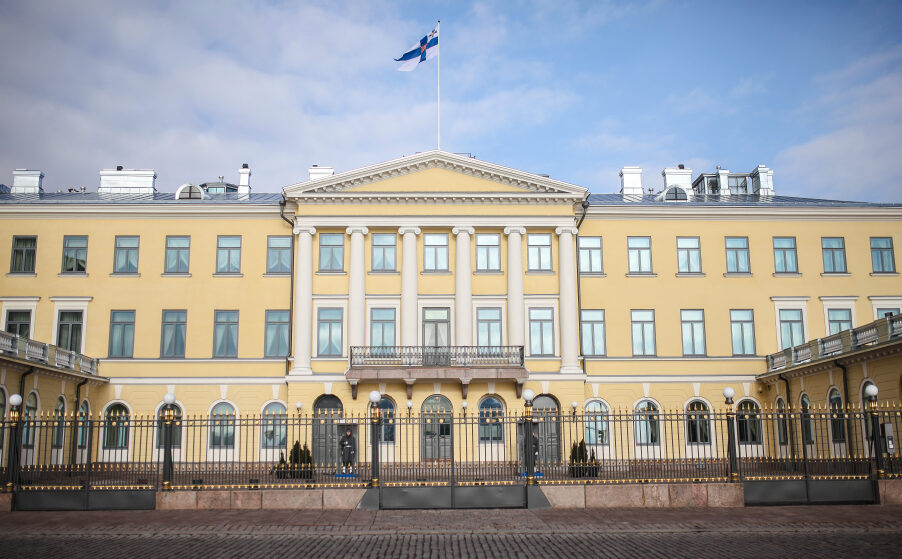
The Presidential Palace. Photo: Matti Porre/Office of the President of the Republic of Finland
-

The palace's main entrance on Pohjoisesplanadi has been given a more distinguished and stately appearance. A red damask pattern carpet leads palace guests up the stairs. Photo: Soile Tirilä / National Board of Antiquities 2014
-

The staircase regained a marbling painting observed in late 19th century black-and-white photographs. Investigation on the third-floor landing revealed original colour hues and fragments. Photo: Matti Porre / Office of the President of the Republic
-
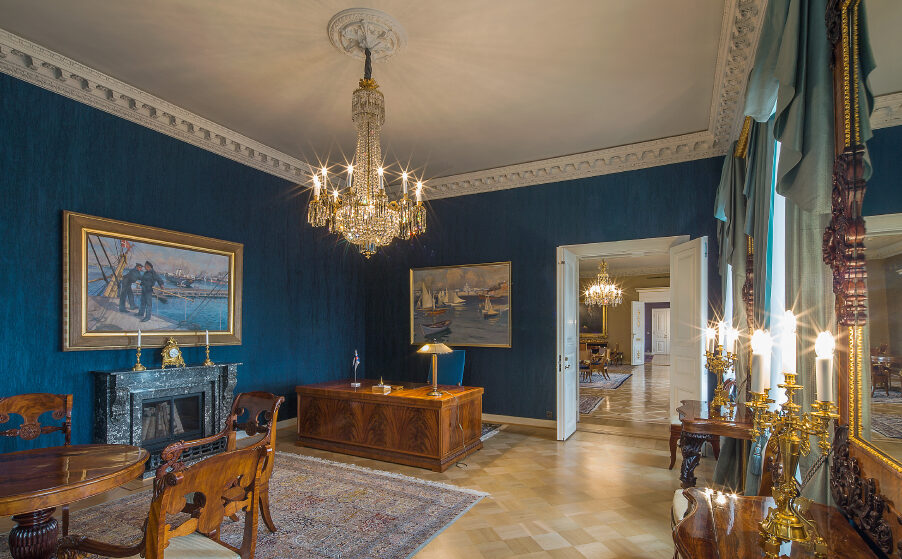
Bilateral meetings with the President of the Republic are held in the President’s o cial study. The President also delivers his annual New Year’s speech from there. All presidents of Finland have used the desk lamp. This room also has one of the four working replaces in the Presidential Palace. Paintings from the imperial art collection are hung on its walls and a painting called The Nyländska Jaktklubben Harbour in Helsinki completed by Albert Edelfelt for the Paris World Exhibition of 1900 hangs behind the desk. Foto: Soile Tirilä /Museiverket
-

The Gothic Revival-style decorative paintings on the ceiling and cupola of the Gothic Hall probably date back to 1870–1880. The 22 provincial and civic coats of arms bordering the roof of the Gothic Hall date back to the same period. Originally designed and made for this hall in particular, the chairs were created by Helsinki carpenter Gustaf Lindh in 1843. This room was originally on two levels. One door was removed and the cupola was built when the merchant’s manor was renovated to form an Imperial Palace. Photo: Soile Tirilä / The Finnish National Board of Antiquities
-
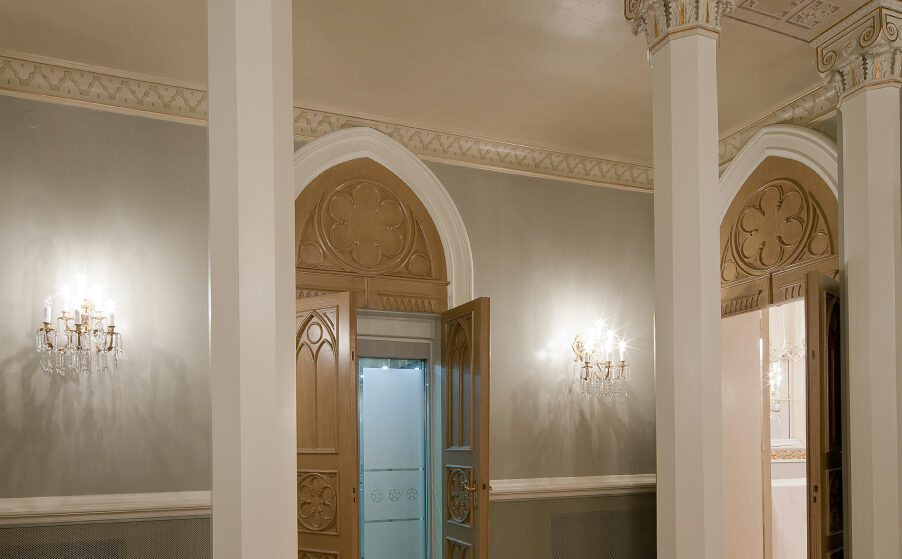
The Gothic Revival-style decorative paintings on the ceiling and cupola of the Gothic Hall probably date back to 1870–1880. The 22 provincial and civic coats of arms bordering the roof of the Gothic Hall date back to the same period. Originally designed and made for this hall in particular, the chairs were created by Helsinki carpenter Gustaf Lindh in 1843. This room was originally on two levels. One door was removed and the cupola was built when the merchant’s manor was renovated to form an Imperial Palace. Photo: Soile Tirilä / The Finnish National Board of Antiquities
-

The Gothic Hall. Soile Tirilä / National Board of Antiquities
-

Decorative painting on the roof of the Gothic Hall has regained its 19th-century appearance. Altogether there have been five phases of painting of the cupola of the Gothic Hall. The newly restored appearance is the oldest original surface from the second phase. Photo: Soile Tirilä / National Board of Antiquities
-
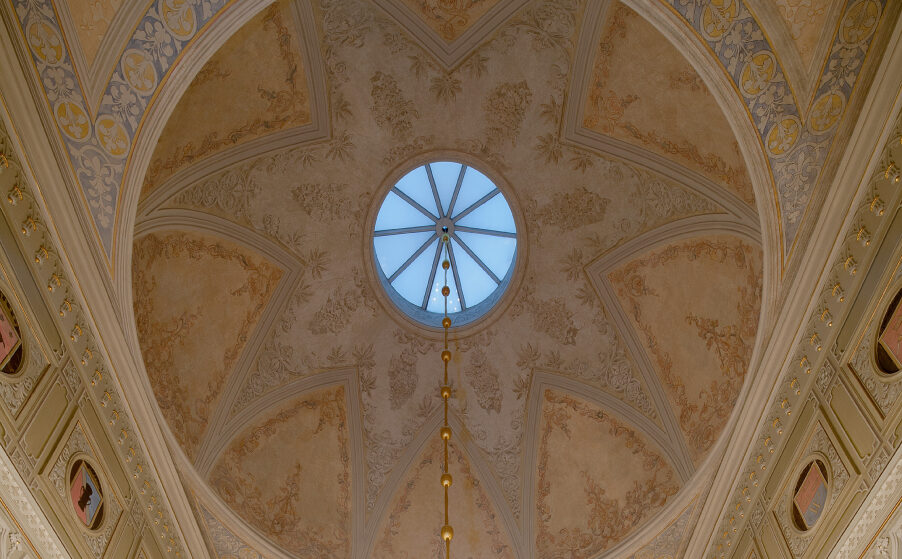
Decorative painting on the roof of the Gothic Hall has regained its 19th-century appearance. Altogether there have been five phases of painting of the cupola of the Gothic Hall. The newly restored appearance is the oldest original surface from the second phase. Photo: Soile Tirilä / National Board of Antiquities 2014
-
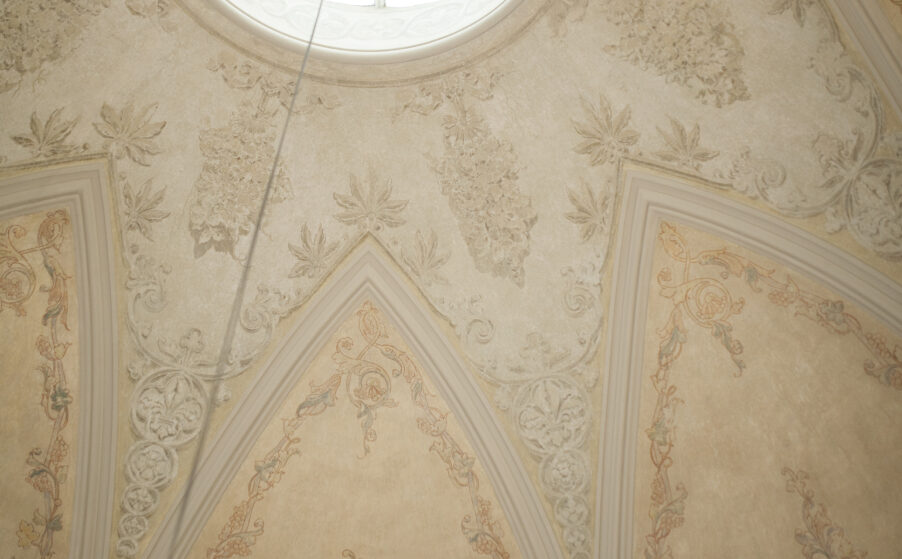
Altogether there have been five phases of painting of the cupola of the Gothic Hall. The newly restored appearance is the oldest original surface from the second phase. Photo: Matti Porre / Office of the President of the Republic
-

Smaller state lunches or dinners and change of government ceremonies are held in the Hall of Mirrors. Designed by Carl Ludvig Engel, this room was originally the Emperor’s throne room and ballroom. It was modelled on the Berlin Schauspielhaus designed by German architect Karl Friedrich Schinkel. Photo: Soile Tirilä / The Finnish National Board of Antiquities
-
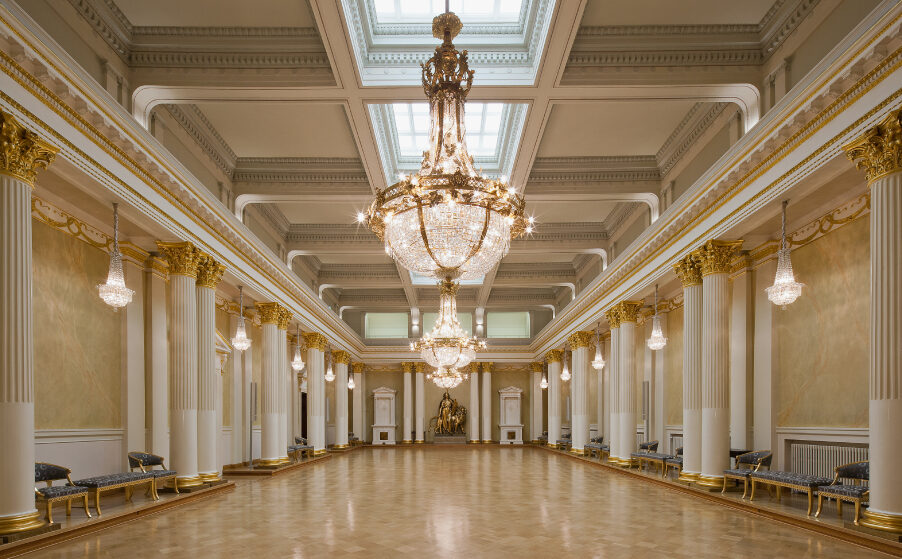
Events, such as banquets for state visits, are held in the Hall of State. Independence Day handshakes and dancing also take place there. Completed in 1907, the hall was inspired by St George’s Hall in the Winter Palace in St. Petersburg. The Lex statue (1919) by Walter Runeberg is a plaster copy of the Lex section of the statue of Alexander II in Senate Square. Soile Tirilä / National Board of Antiquities
-

The Hall of Mirrors. Soile Tirilä / National Board of Antiquities
-

Official talks and receptions are arranged in the Dining Hall. Serving tables are arranged there on Independence Day. Paintings in the grisaille style, which were restored during the renovation of the 1970s, can be seen on the ceiling. Being representative of the Empire style, these paintings on botanical subjects accord with the original model. Paintings from the imperial art collection can be seen on the walls. Photo: Soile Tirilä / National Board of Antiquities
-

The entrance on Mariankatu. Staircase leading to the Atrium from the foyer of the Mariankatu entrance. Photo: Soile Tirilä / National Board of Antiquities 2014
-

The Presidential Palace is located in Helsinki, at the corner of Pohjoisesplanadi and Mariankatu, on one side of the Market Square.Photo: Matti Porre/Office of the President of the Republic of Finland
The Presidential Palace
Latest pictures
-

State visit of the King and Queen of Denmark on 4–5 March 2025
-

Visit to Ukraine on 24 February 2025
















